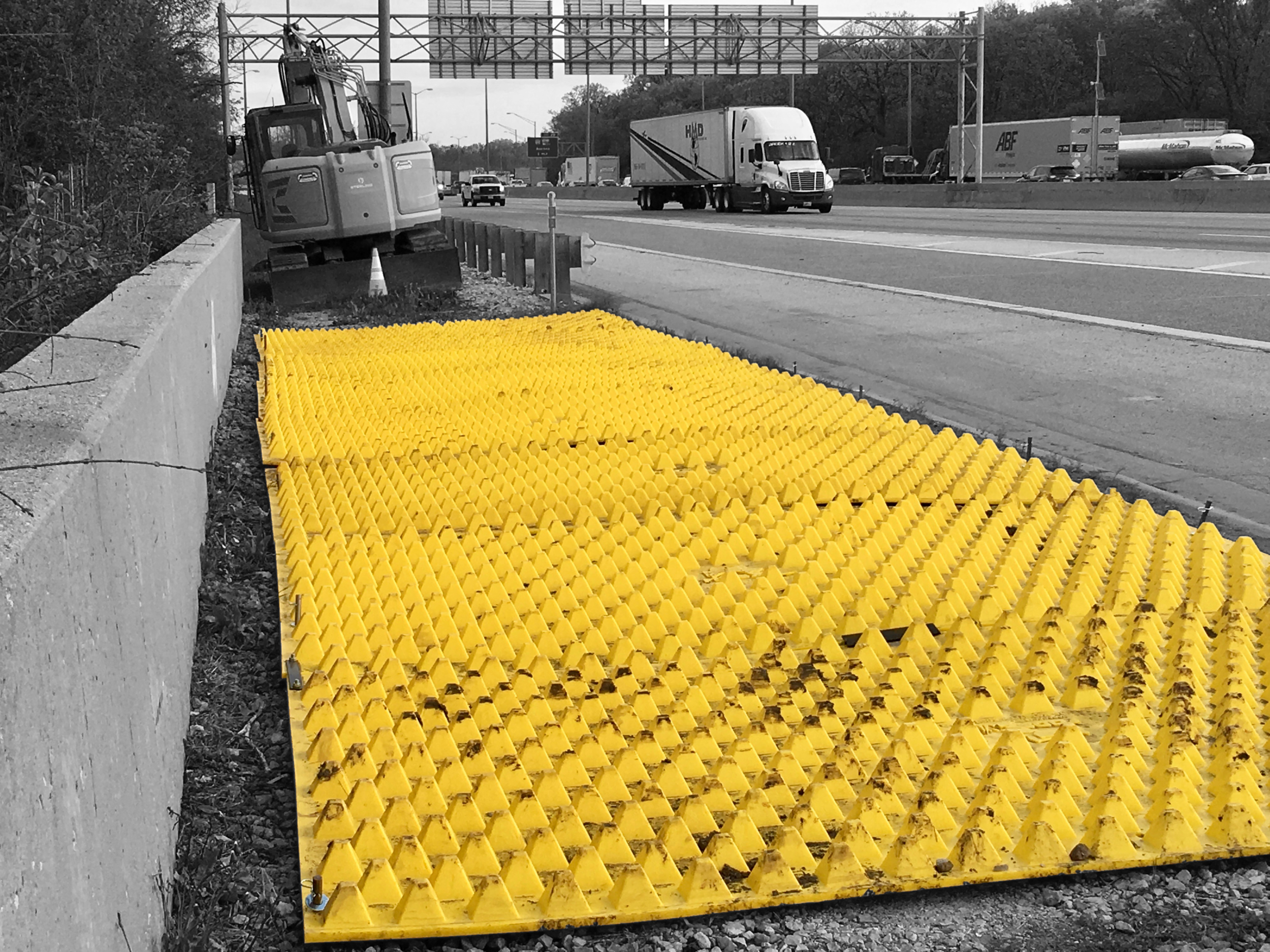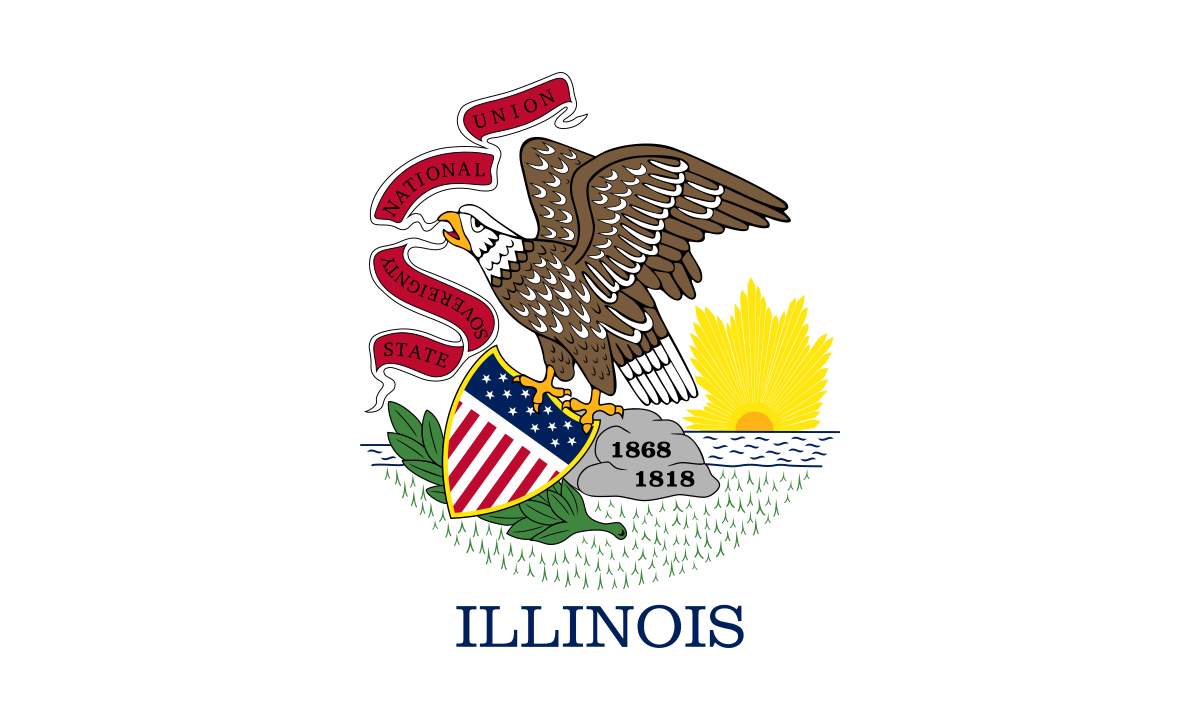Illinois Stabilized Construction Entrance Detail
Contained by the Mississippi across the entire western border, Illinois enjoys large areas of fertile farmland which earns the nickname “The Prairie State.” The combined exports from the major automotive manufacturing plants and medical suppliers, heavy equipment and aircraft manufacturing, and the agricultural industry totals over $50B annually and ranks fifth in total exports across the country.
The iconic Cloud Gate in Millennium Park, Chicago reflects the city skyline of the major metropolitan center. The city is located on the shore of the vast Lake Michigan, the second largest of the Great Lakes by volume. Illinois relies on the water features that enable both the production of crops and manufacturing plant operations. The state manages the water features through join efforts between departments to collaborate and share best practices and techniques.
IEPA Stormwater Construction Permits NPDES
The Illinois Environmental Protection Agency (IEPA) stormwater administration is authorized under the federal Clean Water Act. The IEPA issues stormwater permits as part of the National Pollution Discharge Elimination System (NPDES) stormwater permit program. The program regulates all discharges to surface waters including lakes and rivers.
Construction activities which disturb an area of one acre or greater must obtain permit coverage through the NPDES program unless a waiver is granted. Municipalities and industrial operators must also obtain permit coverage for water discharges resulting from stormwater drains or industrial activity.
Operators of construction sites, can request coverage under the NPDES Construction Stormwater Permit program by applying for an individual permit or, more commonly, by submitting an NOI to request coverage under the General Permit. In either case, the operator must submit a Stormwater Pollution Prevention Plan (SWPPP) which provides an overview of the various land disturbing activities, potential pollution sources, and the planned tactics to mitigate pollution. The tactics or techniques are called Best Management Practices and are compiled in a resource called the Illinois Urban Manual.
The Illinois Urban Manual (IUM)
The Illinois EPA funds the development of the Illinois Urban Manual which is a technical reference for developers, contractors, planners and engineers. The Manual is vetted through the Urban Manual Technical Review and Steering Committees and is a cooperatively maintained by contributions from departments and organizations including the Association of Illinois Soil & Water Conservation Districts (AISWCD), Soil & Water Conservation Districts (SWCDs), the Illinois Department of Transportation (IDOT), and the Illinois Department of Agriculture-Bureau of Land & Water Resources (IDA-BLWR).
Contained in the Illinois Urban Manual is a list of Best Management Practices (BMPs) and guidelines for their applications. The BMPs include information about bioretention facilities, diversions dikes, ditch checks, wetland creations, and Stabilized Construction Entrance detail. Each of these BMPs are used to mitigate a specific source of pollution or sedimentation that occurs during operations that disturb the soil.
The Manual includes details for the practice standard of Stabilized Construction Entrance (No. Code 930). This is usually the first BMP to be installed on a job site and is constructed before land development begins. The purpose of a Stabilized Construction Entrance is to reduce or eliminate sediment tracking onto public right-of-ways or roads.
Illinois Stabilized Construction Entrance Detail
An essential BMP for any large construction site is the Stabilized Construction Entrance. This technique is traditionally composed of a stone entrance pad or a combination of a stone entrance pad with a wheel wash installed in series with the rock. The purpose of the stabilized entrance is to eliminate, reduce or prevent Off Site Vehicular Tracking.
The Manual includes a description this type of stone stabilized construction entrance consisting of a geotextile fabric (Class I, II, or IV) topped with 6” or more of IDOT coarse aggregate (CA-1 through CA-4). The stone is compacted over an area of a minimum of 70’ in length and 14’ in width. Single lot residence projects may reduce the minimum length of rock installed from 70’ to 30’. The site must be prepared to ensure that runoff from the construction entrance does not leave the site and measures must be taken to grade the area or divert the runoff to a sediment trap. Any sediment that is tracked onto the roadways must be immediately removed to prevent washing down the storm drains.
The stone works to agitate the sediment on vehicle tires as they drive across. The sediment collects on the construction entrance and must be maintained by top dressing with additional aggregate. The entrance must be inspected frequently to ensure that sediment is sufficiently contained, and must also be inspected after any rain events.
When a stone stabilized construction entrance is not sufficient to contain the tracking of sediment onto the roadway, a wheel wash is often used. This involves the creation of a wash rack and washing station to clean tires with pressurized water. The drained water must be contained and directed into a sediment basin and must not leave the construction site.
IDOT Construction Manual
The Illinois Department of Transportation uses a SWPPP plan for all highway projects in the state. The IDOT Construction Manual makes reference to the standards set in the Bureau of Design and Environment (BDE) Manual Chapter 41-3.06 for the construction entrance guidelines. The BDE Manual in turn references the specifications in the IEPA Manual while adding a few details about pay structure and recommendations for DOT projects.
The DBE Manual includes recommendations to limit the number of stabilized construction exits used and to install wash stations in a two lane configuration to avoid incoming traffic from depositing soil into the wheel wash, or to use a turn out area for the same purpose.
FODS Reusable Stabilized Construction Entrance System
The FODS Stabilized Construction Entrance System is an effective, reusable solution to construction site track out. The system is comprised of HDPE matting which is formed into pyramids which create a rough surface to deform tires. As construction vehicles pass over the mats, tire treads are spread open to release trapped debris. Mud and dirt collects at the base of the pyramids out of contact with subsequent vehicle tires. The system does not introduce aggregate to the job site and provides a safer solution compared to traditional methods as there is reduced risk of aggregate tracking onto an active roadway. After rain events, the mats can be quickly refreshed without requiring additional material.
Because the system is more effective than rock, the mats are well suited for tight work environments. A 1x5T mat configuration is commonly used to replace 70’ rock entrance while providing a wide turning radius for exiting traffic. The mats provide a significant savings to contractors as they can be reused for 10+ years, eliminating the cost of construction entrance materials. FODS can be installed in as little as 30 minutes and can be anchored to dirt or on concrete and asphalt in urban settings.
IDOT Tri-State Tollway I-294 Project
A common challenge in highway projects is working adjacent to active roadways, the recent developments on the I-294 tollway were no exception. The FODS Reusable Stabilized Construction Entrance System was used as an effective and portable stabilized entrance solution which allowed contractors to operate efficiently throughout each phase. The system does not require aggregate to be installed and therefore reduces the risk of rocks becoming lodged in dual tire vehicles or being displaced onto the roadways.
O’Hare International Airport
When working in conditions which require effective debris control, the FODS Construction Entrance provides an ideal solution. The $8.5B O’Hare Modernization Program involved major expansions, renovations and operational changes to Chicago’s International Airport. During the recent phase, Runway 9C-27C renovations involved demolition and recycling of 180,000 tons of pavement and the relocation of the Ground Runup Enclosure (GRE). FODS Reusable Construction Entrance System was chosen to reduce FOD that escaped onto the runways and taxiways. The highly effective trackout control technique provided superior containment compared to traditional measures.
Additional Resources
IDOT Tri-State Tollway I-294 Project
Chicago O’Hare International Airport
Illinois Urban Manual - Practice Standards (Stabilized Construction Entrance - 930)

